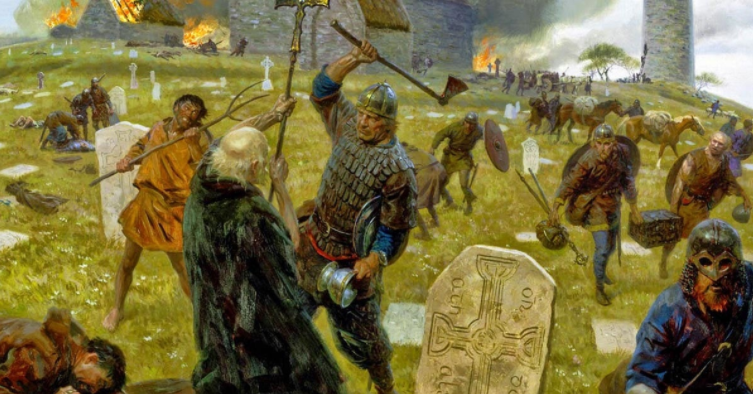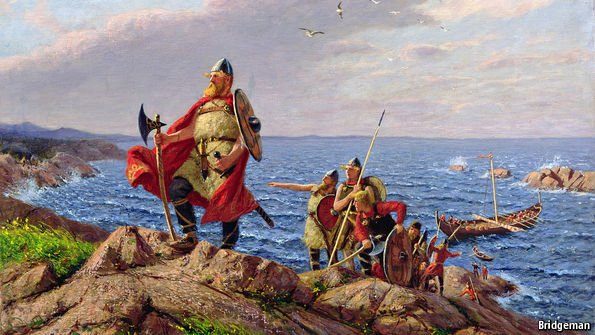By Maria Papagiannopoulou,
Between the 9th and the 11th century, a considerable number of Scandinavians departed their homelands to seek their fortune elsewhere. Vikings or Norsemen (“Northmen”), maritime warriors, began conquering coastal areas in the British Isles, particularly undefended monasteries. Over the following three centuries, they would leave their imprint as pirates, raiders, traders, and settlers on most of Britain and Europe, as well as parts of modern-day Russia, Iceland, Greenland, and Newfoundland.
But who were the Vikings? Contrary to popular assumption, they were neither a “race” united by shared origin or patriotism, nor could they be defined by any distinctive feeling of “Viking-ness.” Although there are references to Finnish, Estonian, and Saami Vikings in historical texts, the bulk of well-known Vikings originate from the territories now known as Denmark, Norway, and Sweden. Their common ground –and what distinguished them from the Europeans they encountered– was that they were from another country, not “civilized” in the local sense, and, most crucially, not Christians.
The exact reasons for the Vikings’ departure from their homeland are unknown; some have argued that it was due to overcrowding, although the first Vikings were more interested in money than land. In the 8th century, Europe was growing richer, which drove the growth of commercial cities, such as Dorestad and Quentovic, on the Continent of Hamwic (now Southampton), London, Ipswich, and York in England. Scandinavian furs were highly prized in the new trading markets, and, via their commerce with Europeans, Scandinavians learned about new sailing technology, as well as the rising riches and internal conflicts among European countries.

The Viking Age began in 793 AD with a raid on the Lindisfarne monastery, off the coast of Northumberland in northeastern England. Despite the fact that the perpetrators —most likely Norwegians who sailed directly across the North Sea– did not completely destroy the monastery, the attack shocked the European religious establishment. These weird new invaders, unlike other cultures, had no regard for religious institutions such as monasteries, which were frequently left unattended and defenseless near the beach.
Vikings limited themselves to hit-and-run attacks on coastal sites in the British Isles (especially Ireland) and Europe for several decades (the trading center of Dorestad, 80 kilometers from the North Sea, became a frequent target after 830). In 840 AD, in a power battle with his brothers to determine who will take the throne after the death of their father, Louis the Pious, Lothar I (one of Louis the Pious’s sons) solicited the support of a Viking fleet, crowning him the next emperor of Francia (modern-day France and Germany).
In the meantime, Viking armed forces remained dynamic on the European continent all through the 9th century, brutally sacking Nantes (on the French coast), in 842 AD, and assaulting towns as distant inland as Paris, Limoges, Orleans, Visits, and Nimes. In 844 AD, Vikings attacked Seville (which was then under Arab rule); in 859 AD, they plundered Pisa, despite being pummeled by the Arab Navy on their way back north. In 911 AD, the West Frankish lord allowed Rouen and the encompassing domain by treaty to a Viking chief called Rollo in trade for the latter’s denying entry to the Seine to other pillagers. This locale of northern France is presently known as Normandy, or “land of the Northmen”.




